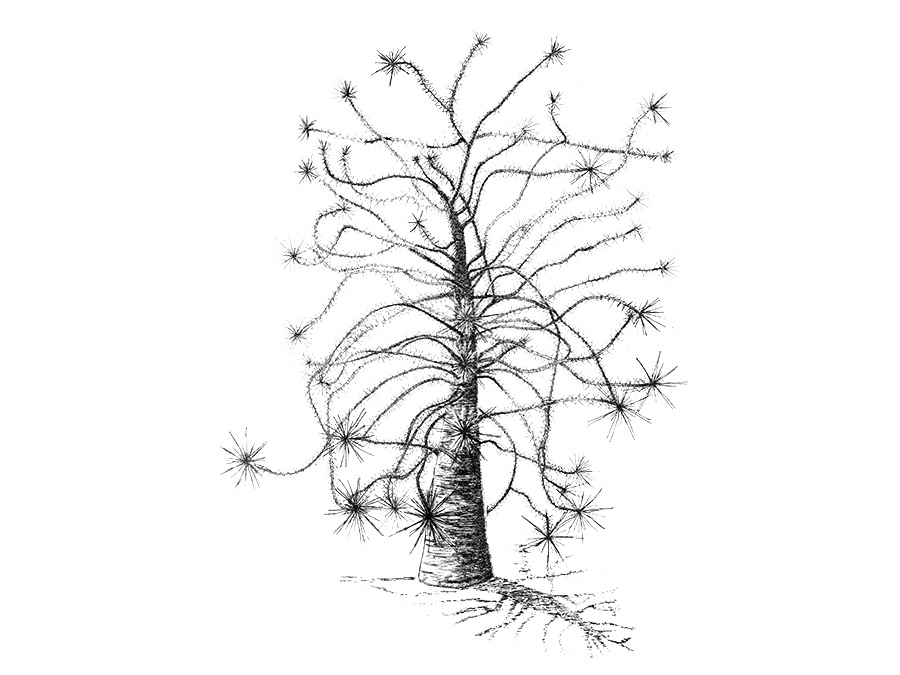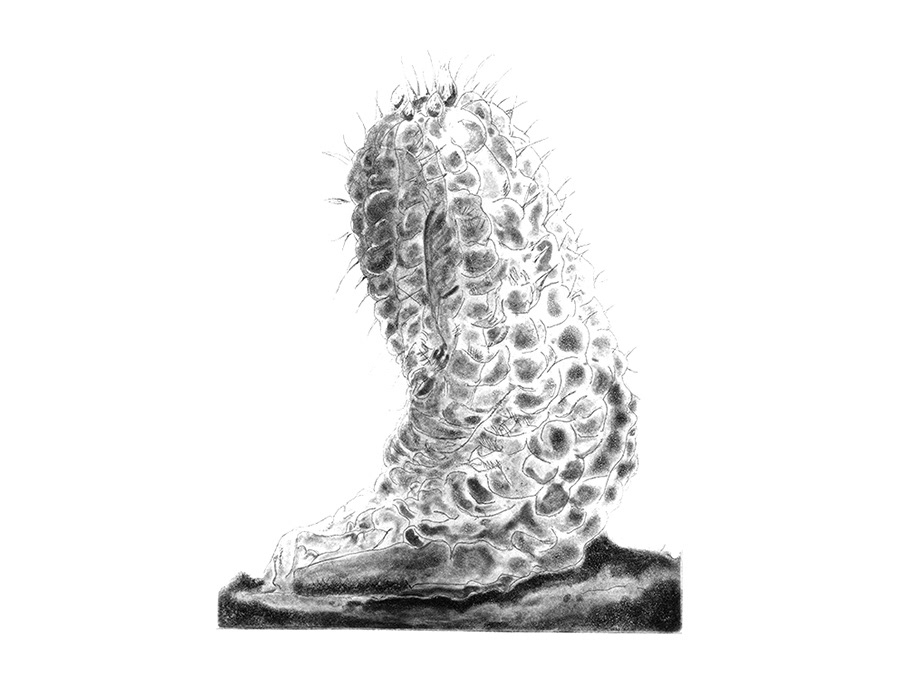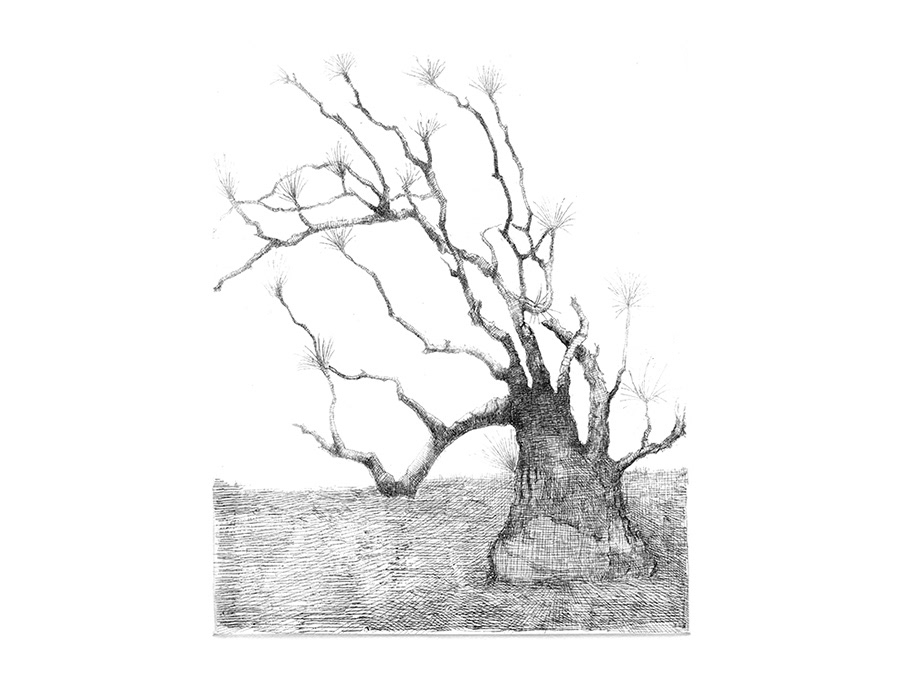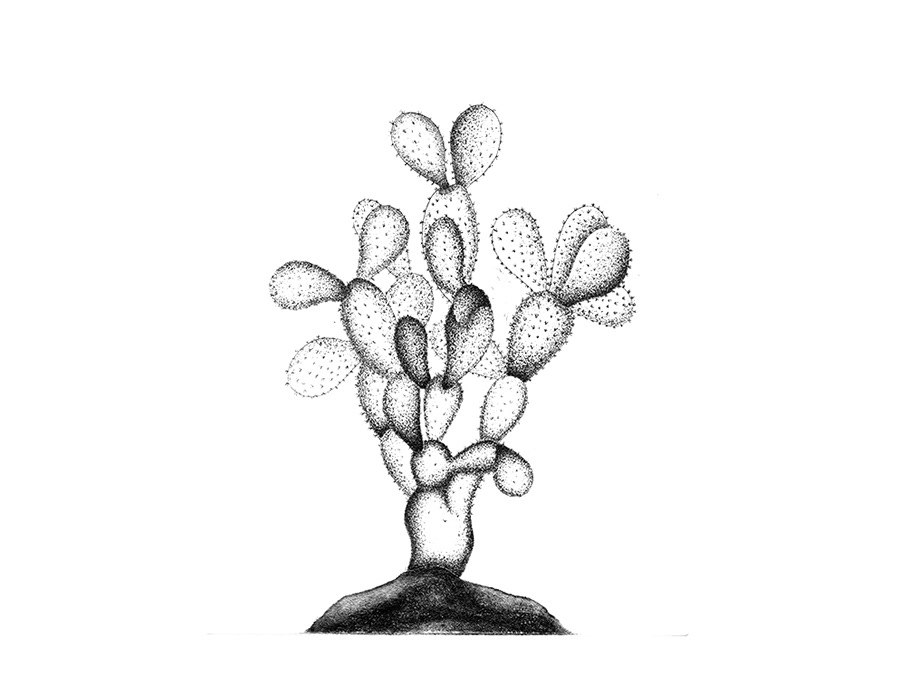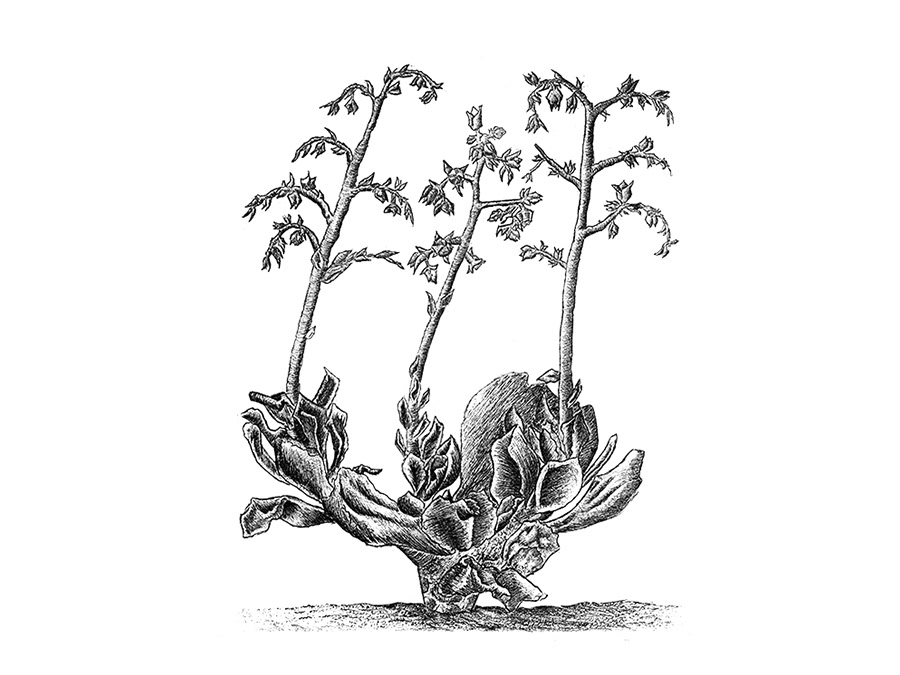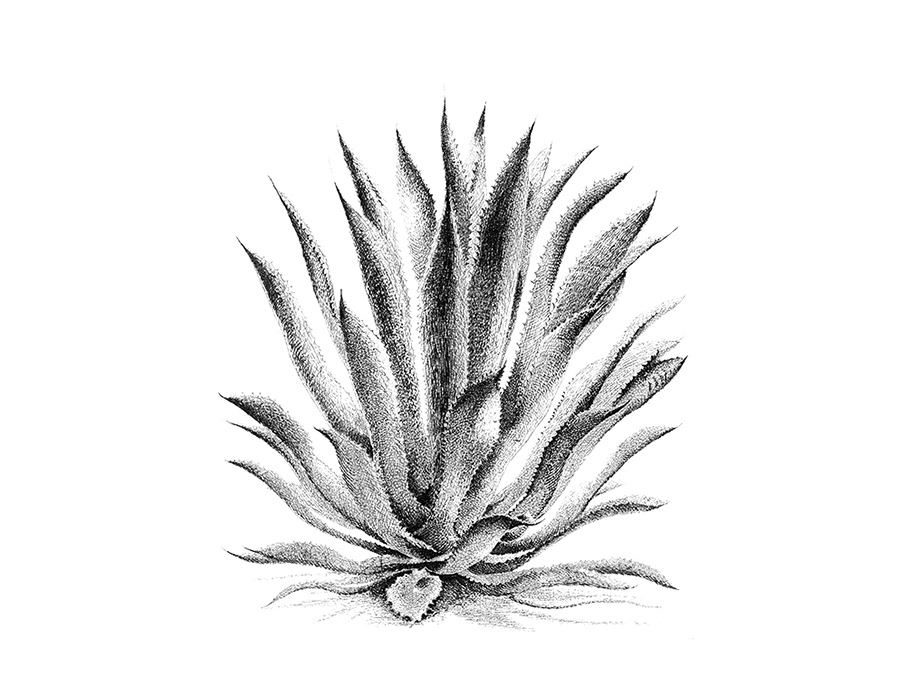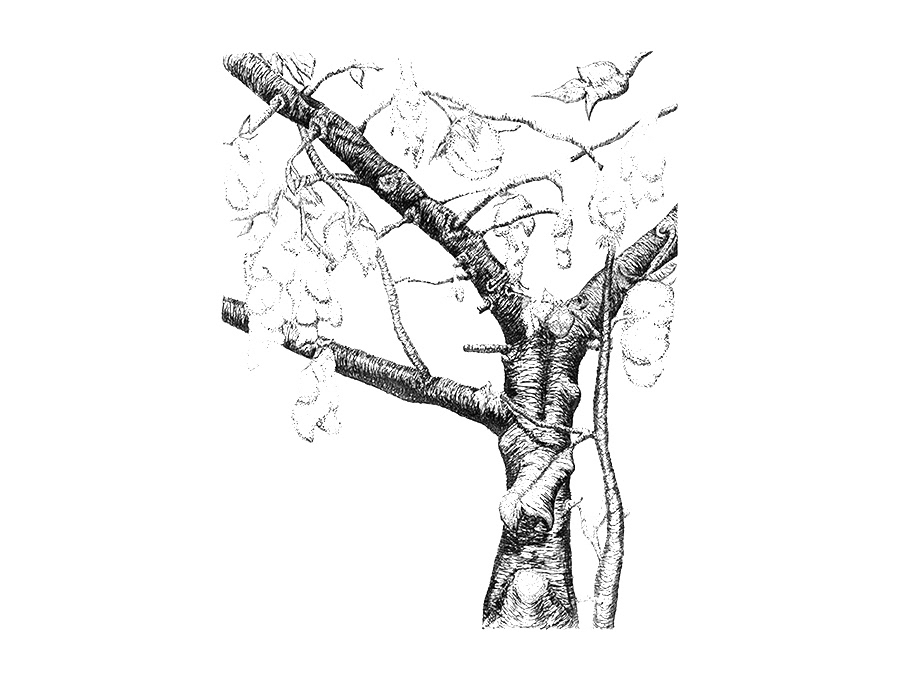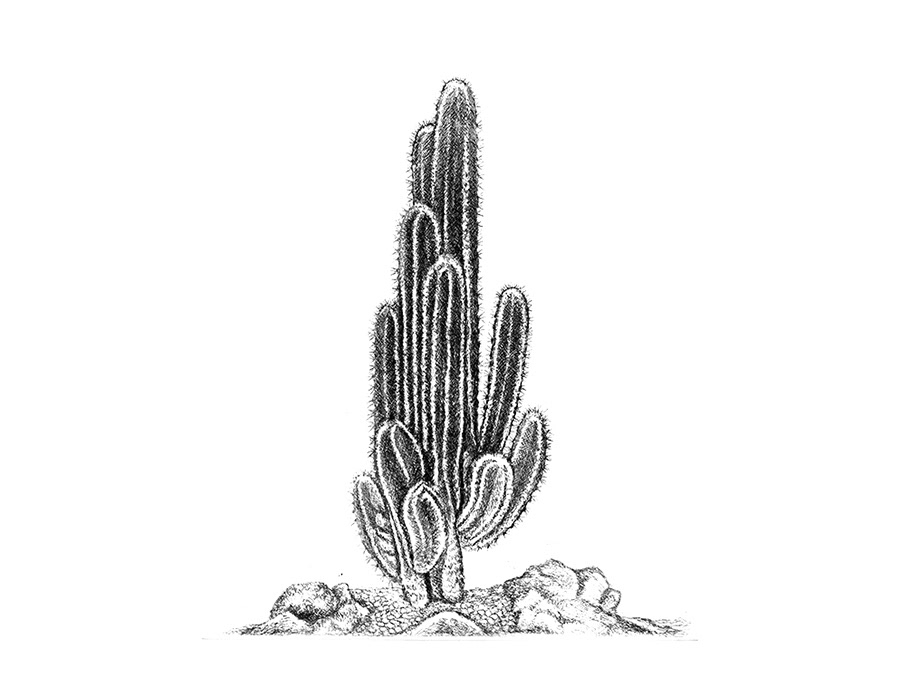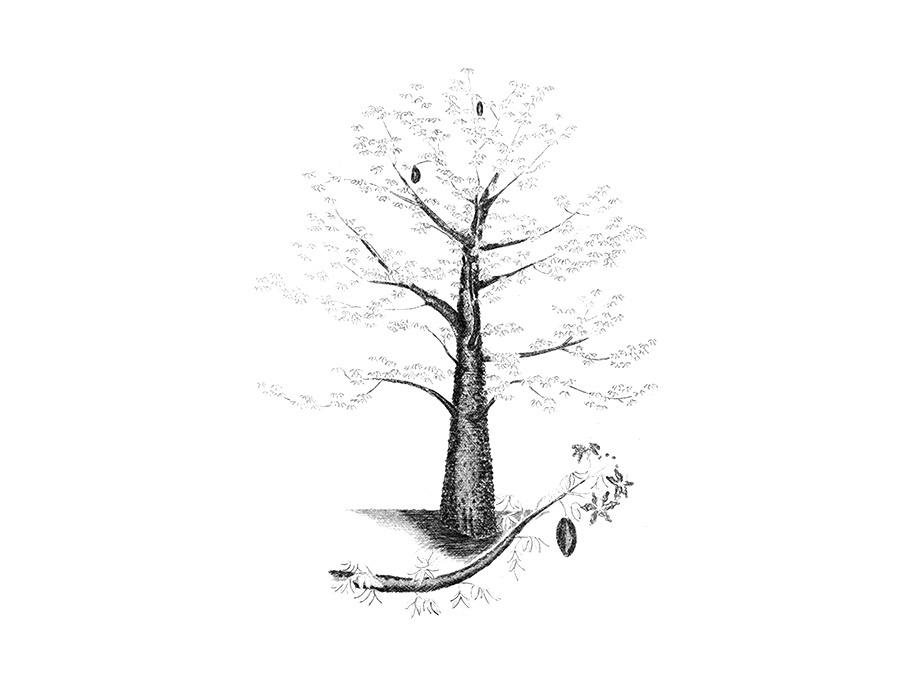Tehuizote • Furcraea longaeva
The illustrated plant comes from Santa María Coatlan, a Zapotec town in the district of Miahuatlán in the Sierra Sur, where it is curiously called 'cedar'. In other areas of Oaxaca, it is called 'tehuizote', apparently derived from the Nahuatl teoiczotl, meaning 'sacred izote (Yucca sp.)'. It is also known as 'whiting', probably indicating an ancient use for suffocating fish; the same use has been documented for other plants of the same family in other areas of Mexico. The Furcraeas, like the Yuccas, are part of the Agavaceae family. The genus includes more than 20 species, which are distributed from Mexico and the Bahamas to Bolivia and the Guianas. Three Central American and Caribbean Furcraeas are the source of the fibers known as 'fique' and 'cabuya', used to make ropes and sacks; one species is cultivated for the same purpose on various islands in the Indian Ocean. In the flora of Mexico, six prominent species grow upright on woody trunks and reach several meters in height. They are prominent plants in the subalpine vegetation in the mountains of the Volcanic Axis and the Sierra Madre del Sur. Its flowering is a spectacle difficult to imagine: the inflorescence reaches a height of 9 meters above the rosette of leaves and forms a cascade of several hundred flowers, generally white. Like the magueyes, and unlike the izotes, the plants of the Furcraea genus die after flowering. The flowers of some species are sterile, and the plants reproduce asexually by means of bulbils, small propagules that sprout from the inflorescence. In these cases, genetic diversity is reduced since the suckers are clones of the mother plant. Tehuizote is endemic to the highest mountains in Oaxaca and southern Puebla, where it grows in thickets and pine and oak forests near 3000 meters of altitude. We have managed to grow it in the Garden despite some difficulties due to its susceptibility to bacterial infections. Our City is located at 1450 meters above sea level, an ideal altitude where we can acclimatize both tropical species from lower areas and plants from the temperate forests of the highest mountains. The Furcraea longaeva that appears in the plate exceeds five meters in height. Its majestic presence speaks of a lucky place to establish a botanical garden. Thanks to Dr. Abisaí García Mendoza of the UNAM Botanical Garden for the identification of this species. Bibliography: Campos Villanueva, Alvaro, et al. 1992 Plants and flowers of Oaxaca. Notebooks of the Institute of Biology #18, UNAM, Mexico, D.F. García Mendoza, Abisaí 2000 Taxonomic revision of the arborescent species of Furcraea (Agavaceae) in Mexico and Guatemala. Bulletin of the Botanical Society of Mexico, 66: 113-130.
You may also like
